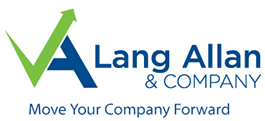Many organizations – from large enterprises to startups and small businesses – use cost benefit analyses to help make important decisions. Using a cost benefit analysis can help teams identify the highest and best return on an investment based on the cost, resources, and risk involved.
What is a cost benefit analysis?
It’s a process to analyze decisions, systems or projects, or determine a value for intangibles. It identifies the benefits of an action, as well as its associated costs, and subtracts costs from benefits. It yields concrete results that can be used to develop reasonable conclusions around the feasibility and/or advisability of a decision or situation.
Why this method?
It supports decision using an evidence-based view of the issue being evaluated. It is also a good tool to develop business strategy, to evaluate a new hire, or to make resource allocations or purchase decisions.
When would I use a cost benefit analysis?
All kinds of businesses use this method to provide unique and valuable insight when:
- Developing benchmarks for comparing projects
- Deciding whether to pursue a proposed project
- Evaluating new hires
- Weighing investment opportunities
- Measuring social benefits
- Appraising the desirability of suggested policies
- Assessing change initiatives
- Quantifying effects on stakeholders and participants
How to conduct a cost benefit analysis.
This isn’t a standard format, but there are core elements, or steps in the analysis, including:
- Establishing a framework to outline the parameters of the analysis
- Identifying costs and benefits so they can be categorized by type and intent
- Calculating costs and benefits across the assumed life of a project or initiative
- Comparing cost and benefits using aggregate information
- Analyzing results and make an informed, final recommendation
Establish a Framework
This is where the rubber meets the road. You’ll want to create a situational overview of the issue you’re trying to solve.
- Examine the existing state, including background, current performance, opportunities, projected performance, and potential risks.
- Define how you’d approach cost benefits and what will be included in the analysis. Consider unforeseen costs that could impact the short- and long-term goals.
- If impacted by geography, add that to the decision-making framework to avoid surprises.
- Identify and categorize costs and benefits, including direct/indirect, tangible/intangible, and real costs, such as:
- Direct costs – product, service, customer, project, or activity in relation to the product of a cost object;
- Indirect costs – fixed in nature, these costs come from overhead or a departmental cost center;
- Tangible costs – usually related to identifiable sources or assets, like payroll, rent, purchases, etc.;
- Intangible costs – could be shifts in customer satisfaction or productivity levels;
- Real costs – expenses associated with a product or service, like labor costs and raw materials.
- Calculate costs and benefits with both the short- and long-term in mind. Remember to convert these numbers to present-day value.
- Compare aggregate costs and benefits over time to identify the return on investment.
- Analyze results to make a decision.
The Process
According to Project Manager, there is a ten-step process to complete the analysis.
- Defining goals and objectives
- Listing alternatives
- Naming stakeholders
- Clarifying the measurement criteria
- Outlining the outcome
- Stating the discount rate (percentage of the balance at the end of a period)
- Expressing the net present value of the project options
- Identifying the sensitivity analysis
- Recommending the choice
Cost Benefit Analysis Templates
There are dozens of templates available from Template Archive for use in Excel or Word. Smartsheet also has dozens of examples and templates to help you create the right analysis for your project.
If you need help with a cost benefit analysis, give us a call. We can help walk you through the steps and assist you in identifying the right path for your company.
